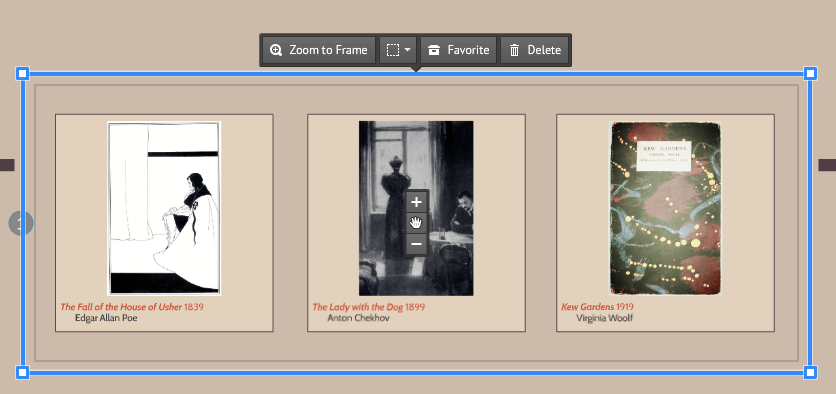When presenting, it’s important to show the big picture, as well as its minute details. For this week’s “Prezi Feature”, learn how you can create a mind map to do just that.
Ideas usually come to us in clusters, and it’s hard to separate one from the other. When we’re brainstorming, we can come up with a whole web of ideas from just a single concept. One idea will branch out to a new one, and two more will branch out from that. Before you know it, you have a complicated map of interlocking chains of thought. It’s usually chaotic, but it also perfectly shows how ideas are related to each other.
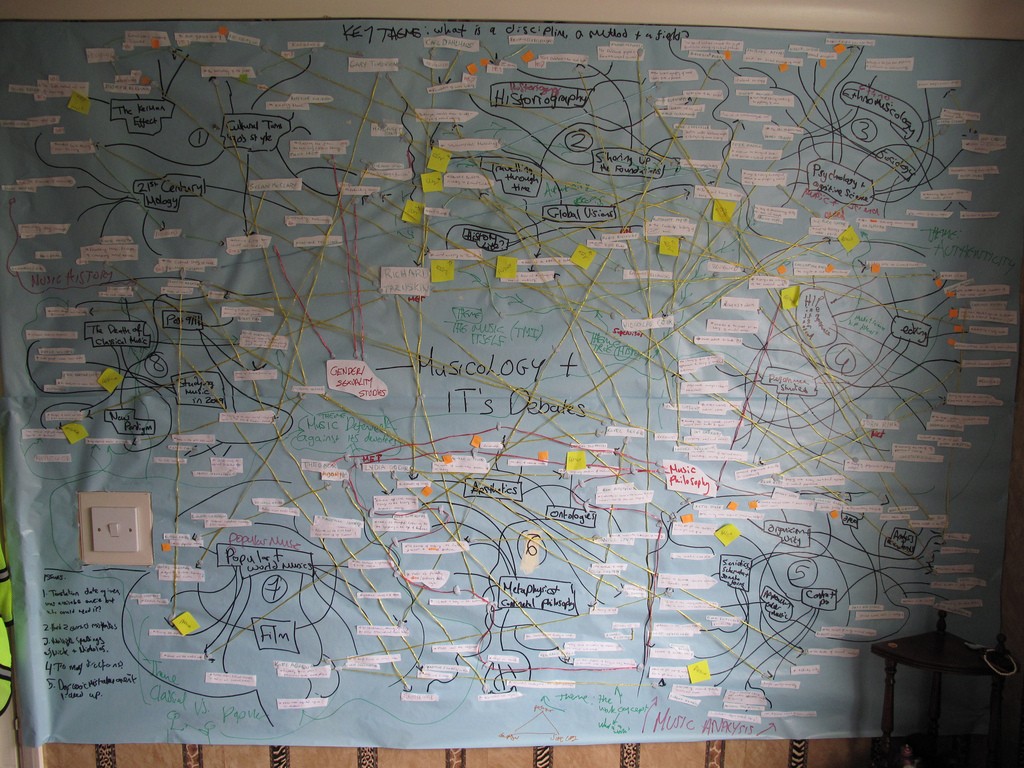
When it’s time to turn your ideas into a presentation deck, it can be hard to trim the big picture. Do you focus on a single line of thought? Which one? What happens when an idea overlaps with something else? How do you turn creative chaos into a neat, linear narrative? Sometimes, you don’t have to. Visualize how a single topic can branch out into a web of ideas by creating a mind map with Prezi.
Finding order in the chaos
The challenge to mind mapping is that complex topics can easily turn into a huge, dizzying mess. To create some order, you’ll need to practice a bit of discipline. Your main goal is to make sure your mind map remains concise, while keeping all the important details. In other words, you’ll need to do some revisions.
As you would when building a slide deck, start with an analogue approach. Grab a notepad and draft your mind map first. Start by writing down your main topic, and then let your ideas branch out across the page. Once you’ve written everything down, condense each idea into key concepts. This step is similar to how you’d create a presentation storyboard. Let the ideas flow freely first, and then edit out excessive and repetitive details.
Creating a mind map in the Prezi canvas
Once you’ve condensed your draft, it’s time to turn your ideas into a free-flowing presentation deck. Mind mapping involves combining colors, shapes, and images, plus the strategic arrangement of all these elements. Prezi is the perfect canvas for that. You’re free to move around each element and create a layout that suits the flow of your ideas. To accurately visualize your topic, take note of these tips when arranging your mind map:
1.) Use different frame types to organize your mind map
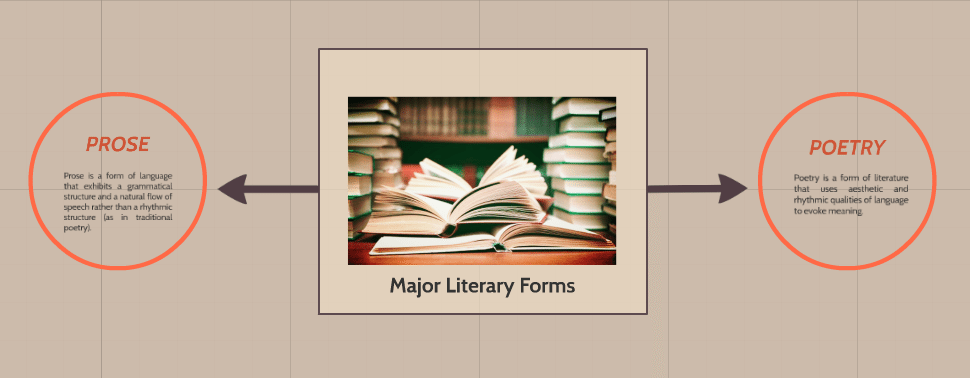
You can make use of different frame types to show how your ideas progress into different “levels”. In this example, the main topic is contained inside a rectangle frame. The two diverging ideas that branch out from there are inside a circle frame.
2.) Create hierarchy by manipulating frame size and changing arrow width
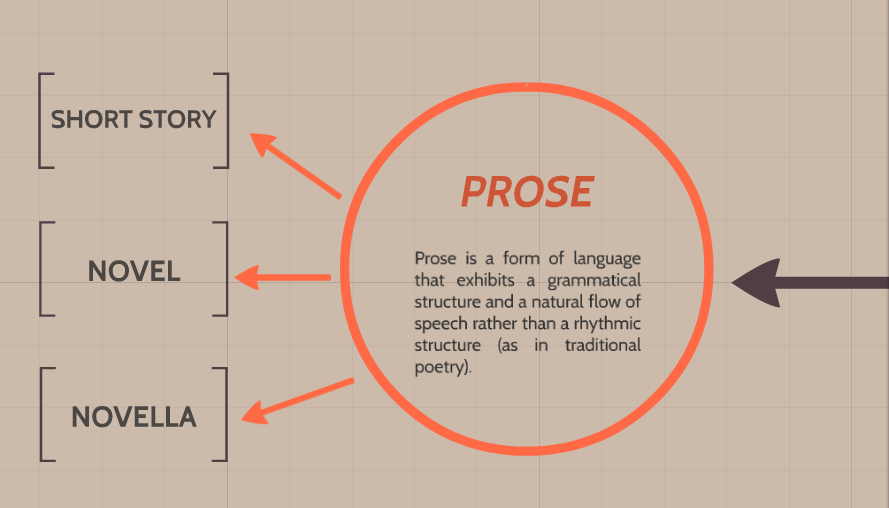
You can also represent hierarchy in your mind map by manipulating the size of your frames. The farther you are from the center, the smaller your frames should be. Do the same thing with your arrows. Decrease thickness as you branch out across the canvas.
3.) Group specific parts or branches with an invisible frame
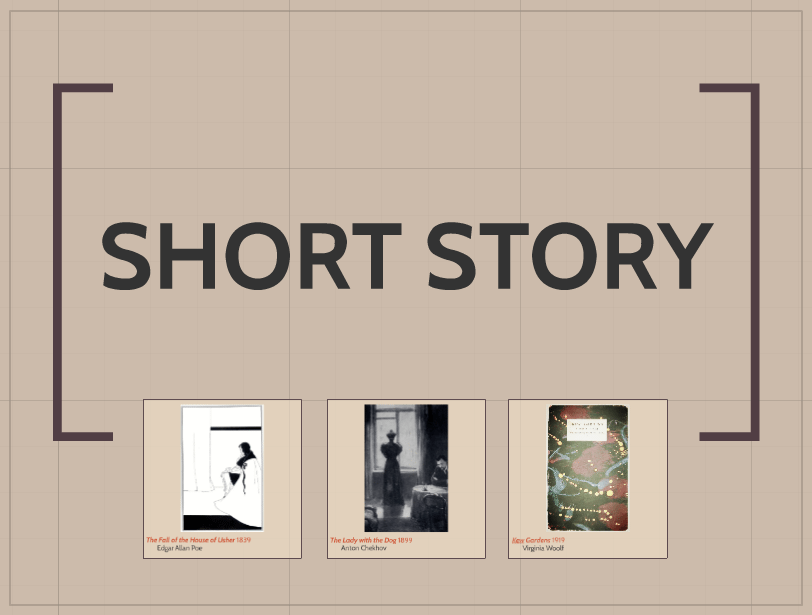
Add an invisible frame to group certain parts of your mind map together. This is useful if you want to focus on a specific branch before discussing each idea.
4.) Set the path carefully
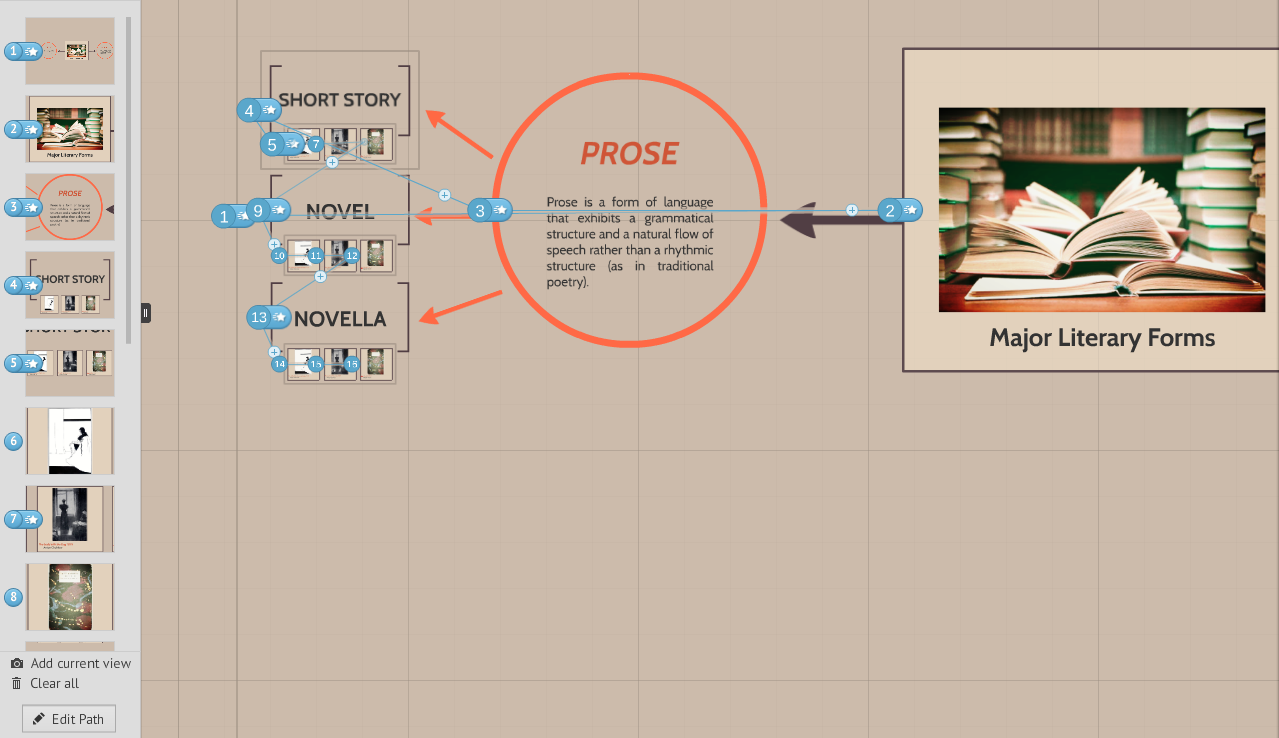
The final look will depend on how you set the path. Once you’ve completed building the mind map, set a path that will allow the audience to see how everything works together. Give the full view at the start of your presentation, then make use of the zoom tool to focus on specific details. To illustrate, click here to view a mind map of a previous blog post called “3 Ways to Creativity“.
Conclusion
The flexibility of Prezi’s canvas allows you to create presentations that defy the usual one-track narratives. You can present the big picture and pan through the entire landscape.
Show your audience how the core message relates to your main points by creating a mind map.
Featured Image: Featured Image: Death to the Stock Photo / Prezi logo via Wikimedia Commons
